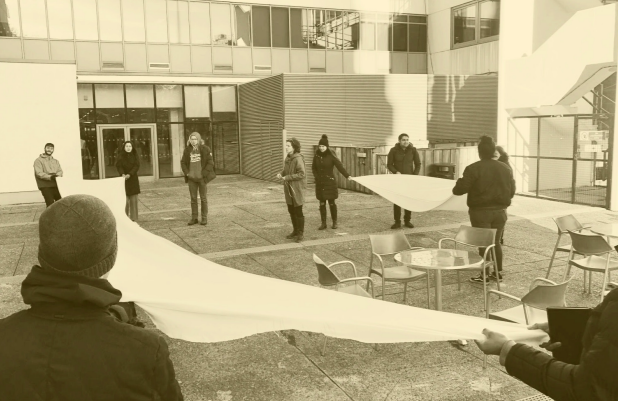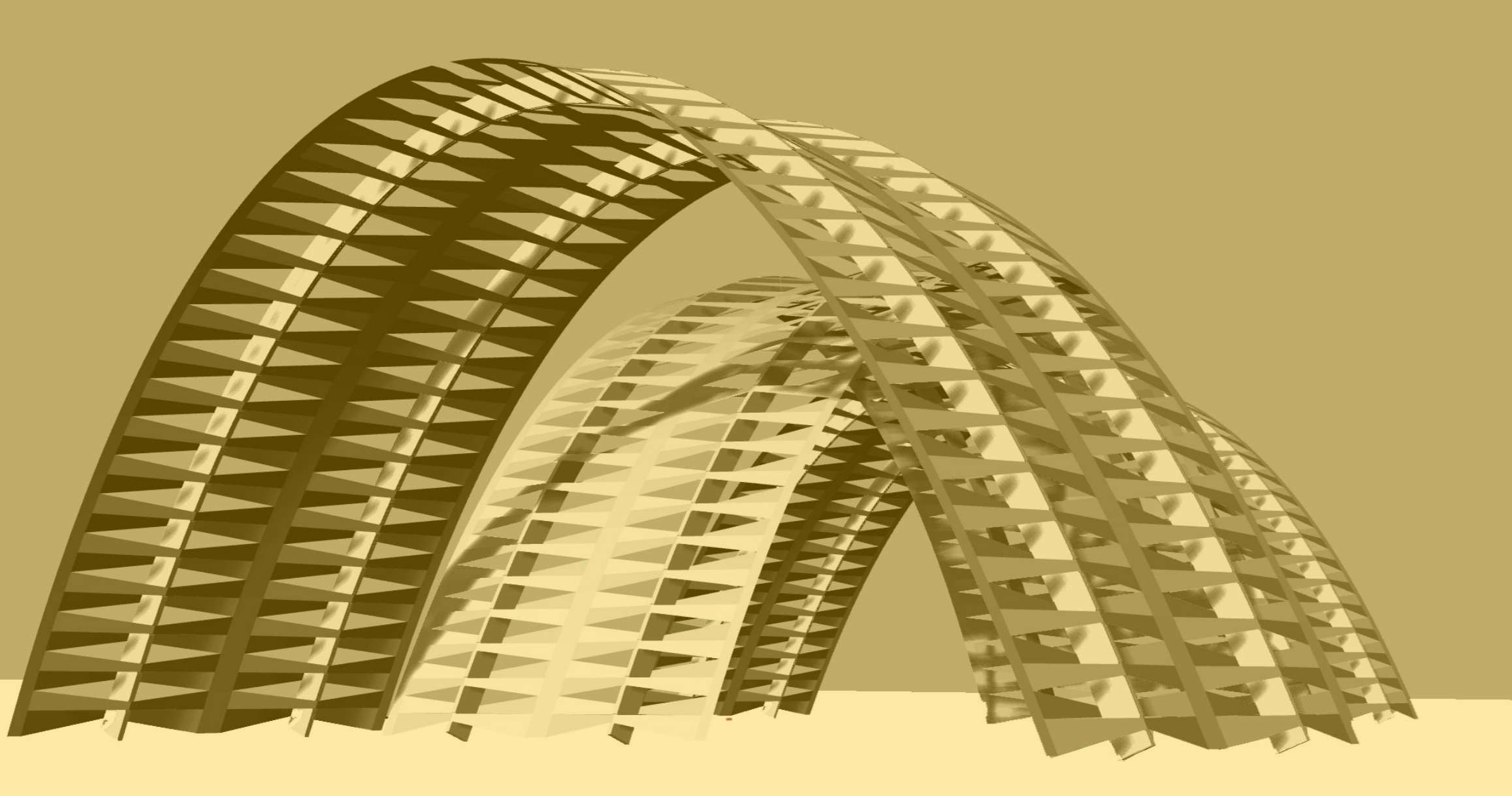Woven Pavilion Studio [3] 2

The Brief.
This year we developed a the Woven Pavilion: CNC cut slots in plywood are ‘woven’ through arches, which are based on a catenary curve for optimum structural capabilities with the help of Grashopper software. The pavilion uses digital fabrication tools for construction and development in collaboration with the in-house Fabrication Laboratory and funded by the Quintin Hogg Trust. As a studio, we have been developing a pavilion design, using scaled models and prototypes to experiment with plywood, using its properties and pushing them to the limits. The following models are my interpretation of the pavilion development. In the beginning, we did not have any limitations and were open to using different construction techniques, structure types and materials. We were brainstorming, looked at precedents for inspiration and had modelmaking charrettes, including one with bamboo led by a bamboo specialist.Then, at some point, we have decided to set out limitations for ourselves to make quicker progress and push the research and exploration deeper rather than wider. Thus, we decided to work with plywood as our material. It is a widely recycled material with good properties of wood being strong both in tension and compression thanks to the fiber structure. It is actively used in the University FabLab and can be CNC and laser processed.
Development: The standard ply is 2440x1220 so we worked with these dimensions at 1:12 and 1:6 scales.
In the meantime, we also visited the University courtyard site together, to get the feel of it, the
sun, the views, the wind and physical context, which would affect the overall design /layout
later. We used chairs as well as long fabric to get the sense of scale and determine the dimensions of the pavilion that we’d want.
we learned a lot from this project, even from just conversations. The experience gained from
the last year’s Oculus pavilion was also helpful, as Maria. Gavin Weber (Weber Industries) and
Geoff Morrow (StructureMode) could already refer to something realized and point out which
things were done well and which could be done better. Will McLean has also helped us as well
as Francois Girardin, Scott Batty, Pete Silver and Matt Haycocks.
We tried to learn from everyone, even from a MArch studio and looked at their models as well
as prototypes exhibition. Some of us went to exhibitions, including Renzo Piano at the RA and
Prototyping in Tokyo at the Japan House to get inspiration and ideas.









Proposal in the site.
![]()

Testing prototypes.
![]()
![]()
![]()
![]()




Structure of arches.
![]()










